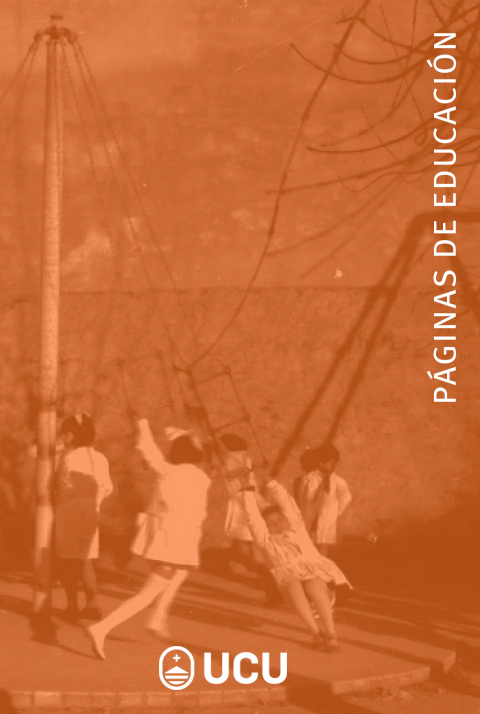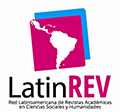Inequality Gaps in the Access to Higher Education in Argentina
DOI:
https://doi.org/10.22235/pe.v14i2.2507Keywords:
higher education, access to education, educational equity, social inequality, cultural capitalAbstract
In a context of limited selective admission mechanisms and tuition free studies in the public sector, Argentina’s social demand for higher education has grown vigorously. This article analyzes whether access to higher education in Argentina presents patterns of social inequality. To that end, the article analyzes whether each high school graduate’s participation differs according to their position in the economic stratification, the cultural capital of the home and the gender. After estimating a logistic regression model, we found that the chances to access higher education are lower for young people at the low socioeconomic level and those who are a first generation with university education. Youths living in households with lower economic income and cultural capital are also more likely to study tertiary fields than university ones and to attend a public institution than a private one.
Downloads
References
Ahumada, H. A., Gabrielli, M. F., Herrera Gomez, M. H., & Sosa Escudero, W. (2018). Una nueva econometría: Automatización, big data, econometría espacial y estructural. Editorial de la Universidad Nacional del Sur.
Angrist, J. D., & Pischke, J. S. (2008). Mostly harmless econometrics. Princeton University Press.
Argentina Gobierno. (2020a). Síntesis de Información Estadísticas Universitarias 2018-2019. https://www.argentina.gob.ar/sites/default/files/sintesis_2018-2019_sistema_universitario_argentino_0.pdf
Argentina Gobierno. (2020b). Anuario Estadístico Educativo 2018. Buenos Aires: Ministerio de Educación. https://www.argentina.gob.ar/sites/default/files/sintesis_2018-2019_sistema_universitario_argentino_0.pdf
Balán, J. (2020). Expanding Access and Improving Equity in Higher Education: The National Systems Perspective. En S. Schwartzman (Ed.), Higher Education in Latin America and the Challenges of the 21st Century (pp. 59-75). Springer Nature. https://doi.org/10.1007/978-3-030-44263-7_3
Barone, C., Triventi, M., & Assirelli, G. (2018). Explaining Social Inequalities in Access to University: A Test of Rational Choice Mechanisms in Italy. European Sociological Review, 34(5), 554–569.
Boudon, R. (1974). Education, Opportunity, and Social Inequality: Changing Prospects in Western Society. Wiley-Interscience.
Bourdieu, P., & Passeron, J. C. (2004). Los herederos. Los estudiantes y la cultura. Siglo XXI.
Buchbinder, P., & Marquina, M. (2008). Masividad, heterogeneidad y fragmentación: el sistema universitario argentino 1983-2007. Universidad Nacional de General Sarmiento.
Breen, R., & Goldthorpe, J. H. (1997). Explaining Education Differentials: Towards a Formal Rational Action Theory. Rationality and Society, 9(3), 275-305. https://doi.org/10.1177/104346397009003002
Brunner, J. J., & Labraña, J. (2020). The Transformation of Higher Education in Latin America: From Elite Access to Massification and Universalisation. En S. Schwartzman (Ed.), Higher Education in Latin America and the Challenges of the 21st Century (pp. 31-41). Springer Nature. https://doi.org/10.1007/978-3-030-44263-7_3
Brunner, J. J., & Miranda, D. A. (Eds.) (2016). Educación Superior en Iberoamérica. Informe 2016. UNIVERSIA-CINDA. https://cinda.cl/publicacion/educacion-superior-en-iberoamerica-informe-2016/
Cabrera, A. F. (1994). Logistic regression analysis in higher education: An applied perspective. En J. C. Smart (Ed.), Higher education: Handbook of theory and research Vol. 10 (pp. 225-256). Agathon Press.
Cabrera, A. F., & La Nasa, S. M. (2000). Three Critical Tasks America’s Disadvantaged Face on Their Path to College, New Directions for Institutional Research, (107), 23-29.
Cambours, A., & Gorostiaga, J. (2019). Acceso y permanencia en universidades del Conurbano: logros y límites de las políticas institucionales. En A. M. Ezcurra (Coord.), Derecho a la educación. Expansión y desigualdad: tendencias y políticas en Argentina y América Latina (pp. 71-83). Universidad de Tres de Febrero.
Chen, X., & Carroll, C. D. (2005). First-Generation Students in Postsecondary Education. A Look at Their College Transcripts. Postsecondary Education Descriptive Analysis Report. U.S. Department of Education Institute of Education Sciences NCES. https://nces.ed.gov/pubs2005/2005171.pdf
Chesters, J. (2015). Maintaining inequality despite expansion: evidence of the link between parents’ education and qualitative differences in educational attainment. Higher Education Quaterly, 69(2), 138-157. https://doi.org/10.1111/hequ.12060
Chiroleu, A. (2014). Alcances de la democratización universitaria en América Latina. Revista Iberoamericana De Educación, 65(1), 1-14. https://doi.org/10.35362/rie651328
Choy, S. P. (2001). Students Whose Parents Did Not Go to College: Postsecondary Access, Persistence, and Attainment National Center for Education Statistics. U.S. Department of Education, Office of Educational Research and Improvement. https://nces.ed.gov/pubs2001/2001126.pdf
Ezcurra, A. M. (2019). Educación superior: una masificación que incluye y desiguala. En A. M. Ezcurra (Coord.), Derecho a la educación. Expansión y desigualdad: tendencias y políticas en Argentina y América Latina (pp. 21-52). Universidad de Tres de Febrero.
Ezcurra, A. M. (2020a). Democratización y desigualdades. El ciclo superior en América Latina en el siglo XXI. Notas preliminares. En F. Acevedo (Coord.), Expansión de la educación superior en América Latina (pp. 121-144). Universidad de la República.
Ezcurra, A. M. (2020b). Educación Superior en el Siglo XXI. Una democratización paradojal. Escenarios globales y latinoamericanos. Revista Latinoamericana de Políticas y Administración de la Educación, 12(7), 112-127. https://revistas.untref.edu.ar/index.php/relapae/article/view/449/532
Fernández Lamarra, N., Pérez Centeno, C., Marquina, M., & Aiello, M. (Eds.). (2018). Educación superior universitaria Argentina. Situación actual en el contexto regional. Universidad Nacional de Tres de Febrero.
García de Fanelli, A. (2019). Panorama de la Educación Superior en Iberoamérica. Red indicES. http://www.redindices.org/novedades/84-panorama-de-la-educacion-superior-en-iberoamerica-a-traves-de-los-indicadores-de-la-red-indices
García de Fanelli, A. (en prensa). Políticas para promover el acceso con equidad en la educación superior latinoamericana. Serie Análisis Comparativos de Políticas Educativas. IIPE-UNESCO.
García de Fanelli, A. M., & Balán, J. (1994). Expansión de la oferta universitaria: nuevas instituciones, nuevos programas. Documentos CEDES, Serie Educación Superior N.º 106. https://repositorio.cedes.org/handle/123456789/3409
García de Fanelli, A., & Jacinto, C. (2010). Equidad y educación superior en América Latina. El papel de las carreras terciarias y universitarias. Revista Iberoamericana de Educación Superior, 1(1), 58-75.
Gasparini, L. (2002). On the Measurement of Unfairness: an application to high-school attendance in Argentina. Social Choice and Welfare, 19, 795-810. https://doi.org/10.1007/s003550200156
Gilardi, S., & Guglielmetti, C. (2011). University life of non-traditional students: Engagement styles and impact on attrition. The Journal of Higher Education, 82(1), 33-53.
Groisman, F. (2016). Estructura social e informalidad laboral en Argentina. EUDEBA.
Haimovich Paz, F. (2017). Equity, Quality, and Variety of Higher Education. En M. M. Ferreyra, C. Avitabile, J. Botero Álvarez, F. Haimovich Paz, & S. Urzúa, At a Crossroads. Higher Education in Latin America and the Caribbean (pp. 77-113). Work Bank Group. https://doi.org/10.1596/978-1-4648-1014-5_ch2
Hass, C., & Hadjar, A. (2020). Students’ trajectories through higher education: a review of quantitative research. Higher Education, 79, 1099-1118. https://doi.org/10.1007/s10734-019-00458-5
Kisilevsky, M. (2002). Condiciones sociales y pedagógicas de ingreso a la educación superior en la Argentina. En M. Kisilevsky, & C. Veleda, Dos estudios sobre el acceso a la educación superior en la Argentina (pp. 14-81). IIPE-UNESCO Sede Regional Buenos Aires.
Levy Yeyati, E., Favatta, F., Montane, M., & Schteingart, D. (2018). Radiografía del trabajo argentino. School of Government Working Papers 201801. https://ideas.repec.org/p/udt/wpgobi/201801.html
Lucas, S. R. (2001). Effectively Maintained Inequality: Education Transitions, Track Mobility and Social Background Effects. American Journal of Sociology,106(6), 1642-1690. https://doi.org/10.1086/321300
Lucas, S. R. (2017). An archaeology of effectively maintained inequality theory. American Behavioral Scientist, 61(1), 8-29. https://doi.org/10.1177/0002764216682989
Marginson, S. (2016). High Participation Systems of Higher Education. The Journal of Higher Education, 87(2), 243-271. https://doi.org/10.1080/00221546.2016.11777401
Marquina, M. (2011). El ingreso a la universidad a partir de la reforma de los 90: las nuevas universidades del conurbano bonaerense. En N. Gluz (Comp.), Admisión a la universidad y selectividad social (pp. 63-86). Universidad Nacional de General Sarmiento.
OECD. (2018). Equity in Education: Breaking Down Barriers to Social Mobility. OECD Publishing. https://doi.org/10.1787/9789264073234-en
OECD. (2019). How does socio-economic status influence entry into tertiary education? Education Indicators in Focus 69. https://doi.org/10.1787/22267077
Pascarella, E.T., Pierson, C.T., Wolniak, G.C., & Terenzini, P. T. (2004). First-Generation College Students. The Journal of Higher Education, 75(3), 249-284. https://doi.org/10.1080/00221546.2004.11772256
Paz, J. A., & Cid, J. C. (2012). Determinantes de la asistencia escolar de los jóvenes en la Argentina. Revista Electrónica de Investigación Educativa, 14(1), 136-152.
Rabossi, M. (2011). The Private University Sector in Argentina: A Limited and Selective Expansion. Excellence in Higher Education, 2(1), 42-50. https://doi.org/10.5195/ehe.2011.28
Raftery, A. E., & Hout, M. (1993). Maximally maintained inequality: Expansion, reform, and opportunity in Irish education, 1921-75. Sociology of Education, 66, 41-62. https://doi.org/10.2307/2112784
Troiano, H., Torrents, D., & Daza, L. (2019). Compensation for poor performance through social background in tertiary education choices. Studies in Higher Education, 46(6), 1-17. https://doi.org/10.1080/03075079.2019.1666262
Trombetta, A. (2000). Los estudiantes terciarios: sus características socioculturales y sus motivaciones en la elección de una carrera. CEDES. https://repositorio.cedes.org/bitstream/123456789/3938/1/5175.pdf
Trow, M. (2006). Reflection on the transition from elite to mass to universal access: forms and phases of higher education in modern societies since WWII. En J. J. F. Forest & P. G. Altbach, International Handbook of Higher Education (pp. 243-280). Springer. https://doi.org/10.1007/978-1-4020-4012-2_13
Valdés Fernández, M. (2019). Efectos primarios y secundarios en la expectativa de matriculación universitaria: la desigualdad como reto del siglo XXI. Revista Prisma Social, (25), 332-358. https://revistaprismasocial.es/article/view/2595
Veleda, C. (2002). Estrategias individuales y familiares en la elección de las instituciones de educación superior. En M. Kisilevsky, & C. Veleda, C. Dos estudios sobre el acceso a la educación superior en la Argentina (pp. 89-139). IIPE-UNESCO. https://www.buenosaires.iiep.unesco.org/es/publicaciones/dos-estudios-sobre-el-acceso-la-educacion-superior-en-la-argentina
Vieira do Nascimento, D., Mutize,T., & Roser Chinchilla, J. F. (2020). Hacia el acceso universal a la educación superior: tendencias internacionales. https://www.iesalc.unesco.org/2020/11/17/el-iesalc-lanza-el-informe-hacia-el-acceso-universal-a-la-educacion-superior-tendencias-internacionales/
Downloads
Published
How to Cite
Issue
Section
License
Copyright (c) 2021 Páginas de Educación

This work is licensed under a Creative Commons Attribution 4.0 International License.















